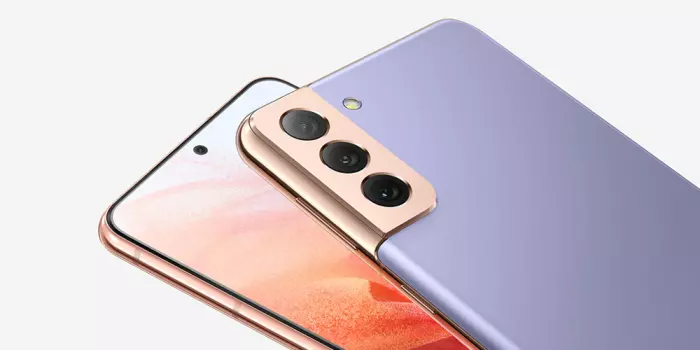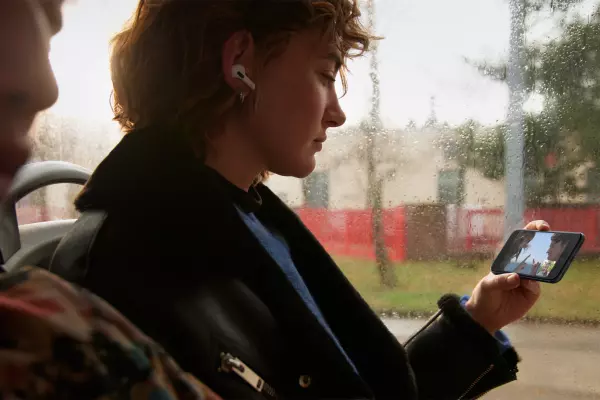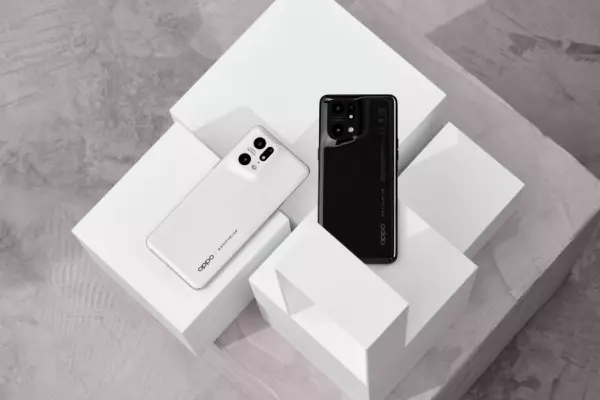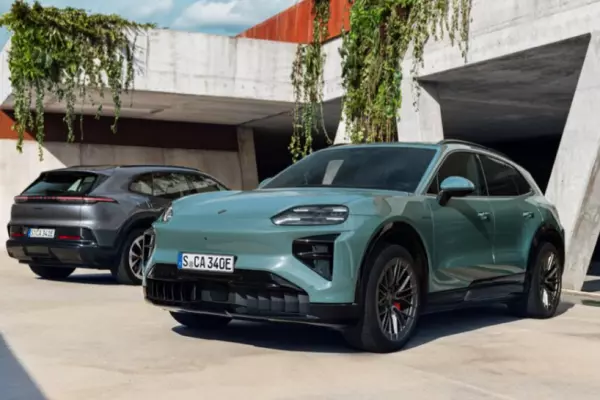The world of Android phones is more diverse than it is often given credit for. Oppo, Xiaomi, Motorola and Huawei turn out solid handsets in New Zealand at premium and budget prices.
But to many smartphone buyers, Samsung is the number-one Android choice, and some may even be aware of Samsung only as the main alternative to the sales might of Apple’s iPhone.
After using the regular Galaxy S21 for a month, I’m confident in saying Samsung’s flagship handset for 2021 should be the default Android phone of choice for New Zealanders looking to upgrade – despite the alternatives on the market.
Samsung has also released the $1799 S21+ and $2199 S21 Ultra, but this review is of the cheapest model.
At $1399, the S21 costs $50 more than the iPhone 12 mini and $100 less than the iPhone 12.
Samsung has trimmed back the specs from last year’s S20 to reach this price point, hence the S21’s plastic back. This is rare for a top-end phone. There are glass backs on the S21+ and S21 Ultra, but the plastic has its advantages: It makes the phone lighter, and I was far more confident to use it without a case (though, of course, the display is still smashable).
The S21 is still IP68 water and dust resistant and is compatible with wireless charging. The plastic also has a matte finish so you can’t see fingerprints. It’s a win-win.
Other cost-cutting measures include Samsung copying Apple and shipping the phone with only a USB-C cable in the box – there are no headphones or charging brick included. Expect to see this become the norm as manufacturers look to cut down on e-waste and box sizes. Samsung hopes you’ll have a compatible charger at home or will fork out $35 for a new one.
The phone also has 8GB RAM rather than the 12GB of last year’s S20, and it no longer has microSD card expansion. But I came across absolutely no slowdown when playing high-end games and running lots of apps, and with 256GB storage as standard (the iPhone 12’s 64GB standard is paltry in comparison), you’re not likely to run out of space.
It’s all powered by Samsung’s Exynos 2100 processor, as good an engine as you’re likely to find in a phone this year. The S21 is one of the best-performing Android phones on the market.
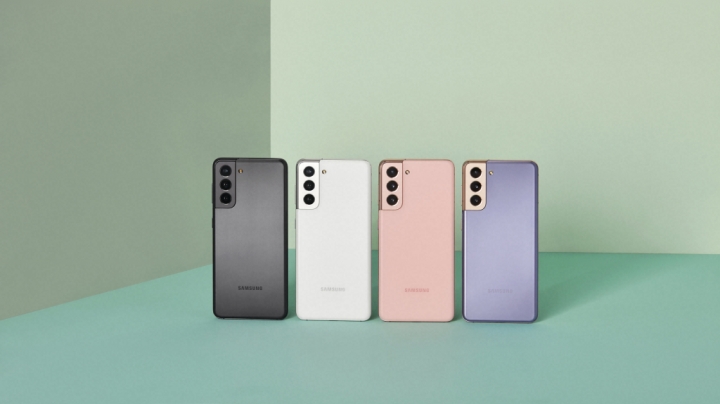 The Samsung Galaxy S21 colour range.
The Samsung Galaxy S21 colour range.
Smooth operator
The display is 1080p (Full HD) rather than 1440p (Quad HD) but you really won’t notice. On the S20, you couldn’t run the screen at full resolution and have ultra-smooth 120Hz refresh rate scrolling, so it was a compromise.
With a Full HD 120Hz screen, the S21 performs excellently. Until recently, most phone screens had 60Hz refresh rates, and the iPhone 12 range still does. Doubling the rate means apps and menus scroll twice as smoothly, a small touch that improves the day-to-day enjoyment of using the phone but does dent battery life slightly.
That said, I never ran out of juice before bedtime.
The S21’s screen is also flat rather than curved like Samsung phones of previous years. I prefer a flat display as curved edges are only ever aesthetic and don’t provide additional function, though this is subjective.
My review unit was the Phantom Violet model, which sports a purple back with gold rails around the edges that merge into the stylish triple camera housing. It’s an acquired colour combo, though grey, white and pink versions are also available.
For the first time in New Zealand, the cheapest Galaxy S phone is 5G compatible. That means if you’re in an area with 5G and want to fork out for the contract, you’re good to go, and it’s a nice-to-have that will serve you well in a year or two when coverage is more widespread and 5G plan prices come down.
High points
The best two things about the S21 are its display and the cameras. Great screens are par for the course on Galaxy S phones, but Samsung has done well to make the triple cameras versatile, fun to use and better than most.
It means there’s a main lens, zoom lens, and ultrawide lens. The latter lets you capture more of a scene and is a feature you won’t want to give up once you have it.
The zoom function is mostly digital, meaning it uses software rather than optical hardware to zoom in, but it’s fine to quickly capture an important photo of a delightful dog in the street.
Samsung’s colour science on its photos leans towards “Instagram-ready” compared to iPhone photos by saturating colours slightly, but most people should be happy with the vibrant, sharp images. There are a few fun features, like the excellent portrait mode, plus a director’s view for vloggers that captures video from front and rear cameras at once.
Samsung’s Android software, called One UI, pleasingly gets better every year and is a far cry from the mid-2010s mess the phones were once known for. A full dark-mode option is welcome, as are the clear menus and almost limitless home screen, theme, and settings customisation options – one of the best reasons to choose Android over iOS.
The S21 also comes with Samsung promising three years of Android software upgrades, a much better update schedule than most Android phones can promise.
I also recommend the S21 if you are a Windows 10 person, because Samsung has worked with Microsoft to better integrate compatibility between Windows and Android. Microsoft’s Office apps are preinstalled, and using the Your Phone app, you can mirror your phone on your laptop or desktop to send and make calls, send messages, and even run full apps.
Conclusion
My favourite Android phone from 2020 was the Oppo Find X2 Pro, which I still recommend, but it costs $1899.
For $500 less, you can get Samsung’s latest with a newer processor, similar quality high-refresh-rate display, a more durable plastic back, more manageable size, wireless charging, and three years of updates guaranteed. Sold.


